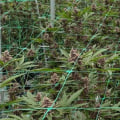Obtain a land use permit and a business license from the local government; obtain building permits and build the growing space; obtain environmental permits or exemptions; and finally. Obtain a license to operate from the state. In general, there are two different licensing rates. There is an application fee, which is the fee paid at the time of submitting the application and is the fee associated with having the regulatory body review and process the application.
Then, once the application is approved, there is the actual license fee. Generally, the license fee must be paid every year for renewal. The state license fee also varies depending on the type of license you are applying for. No matter what category of cannabis business you want to enter, you'll need to apply for a license.
The crop requires a license from the California Department of Food and Agriculture (CDFA). However, before you apply for the license, you must decide what type you are going to apply for. An adult use license refers to growing cannabis specifically for the recreational retail sector. A medical license is required for the cultivation of medical marijuana.
Finally, the CDFA allows a provisional or temporary license. Unlike other types of licenses, temporary licenses cannot be renewed. To obtain a California cultivation license, you must complete an online application on the California Cannabis Portal. A link to the application, training videos, and other resources for your application will be provided here.
You can get a license to grow up to 99 medical marijuana plants in California. California's 99-plant grow license allows you to grow more than the initial 6 or 12 immature plants. With this type of license, then you cannot grow more than that figure or else you will face the law. To outgrow this, you'll need a permit to keep it in your home.
Permission can be obtained through a qualified doctor. Under California SB 420, individual cannabis dispensaries can be grouped together to grow together as a non-profit collective entity, which can raise up to 99 plants. A cannabis event organizer licensee can apply for a temporary cannabis event license for a specific event that the licensee wishes to hold. Officially legalized by Proposition 206, the market for the sale, manufacture and cultivation of cannabis has undergone a drastic change.
These standards protect flows and water quality by ensuring that diversion of water and the discharge of residues from cannabis cultivation do not harm water quality, riparian habitat, wetlands, springs and aquatic habitats. Distributor (transport only): Also referred to as a type 13 license, distributor (transport only) licensees can transport cannabis products between licensees and are restricted to transporting only cannabis products. There is competition in Cali for cultivation licenses, so if you are more aggressive in acquiring your market share, you are more likely to succeed in growing cannabis consistently for the market you plan to serve. Investors, traders and landowners who focus on cannabis are very successful in cultivation.
Cultivation goes one step further, as there are extensive local and zoning ordinances that apply specifically to this type of cannabis business. MCSB: Acronym for Manufactured Cannabis Safety Branch, this is a CDPH branch that handles all licensing and compliance with the cannabis manufacturing law. For example, distributors may transport cannabis products from one grower to a testing laboratory or from another distributor to a retail licensee. Specifically, the Manufactured Cannabis Safety Branch of CDPH handles all licensing and enforcement of manufacturing compliance.
Consider how the property can meet your growing needs and if you can grow adult or medical marijuana with a grow license. With the California cultivation license, you are only allowed to grow cannabis for medical use. Local government officials often worry about recreational and medical cannabis being grown in their homes. Specialty Cabin License applies for mixed-light cultivation of up to 2,500 canopy areas, up to 25 mature plants outdoors, or up to 500 square feet of canopy for indoor cultivation, in each case in one location.
For your commercial cannabis cultivation to work, you'll need permits, cannabis licenses, and certifications from other local departments. . .






